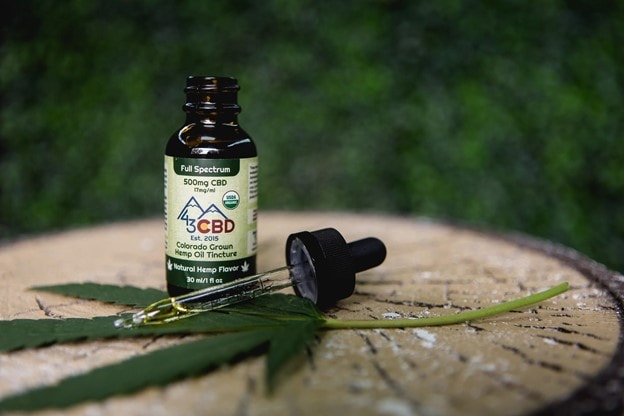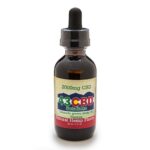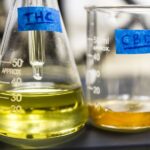
These are some exciting times for the world of cannabis — especially for the newly emerging therapeutic cannabinoid, cannabidiol; also known as CBD. Currently, researchers are trying to determine exactly how CBD can help bring users relief from certain health conditions, and what amounts are needed to be effective.
That being said, all CBD is not created equal. We love the therapeutic and healing potential of cannabidiol, its non-addictive nature, and its overall safety profile which makes it a much more appealing alternative to prescription drugs. Nevertheless, in order for CBD to be effective, it needs to be absorbed in the bloodstream so it can enter our endocannabinoid system.
In pharmacology, the process of substances being broken down and absorbed by the body and effectively delivered to our organs is known as bioavailability. The hard part of determining bioavailability is being able to measure exactly how much a substance is actually getting absorbed and used, which is dependent on a little known process called pharmacokinetics. This refers to how the body absorbs and eliminates a substance (in this case CBD), the qualities of CBD itself, and any other outside factors that could influence how you absorb and utilize it.
If we want to get technical, the delivery method and quality of the CBD used are two of the most important factors when it comes to bioavailability and potency. For this article, we will be exploring the different ways CBD can be introduced into the body which include the use of tinctures, salves, sprays, and more- so let’s get started!
Oral: Edibles, Oils, and Capsules

CBD formulations that are prepared to be used orally, such as oil, tinctures, liquid drops, capsules, food, and beverages are the most popular among consumers, however, it’s the least bioavailable of all delivery methods: between 6-19%. This is because CBD is fat-soluble, so it’s not as easily absorbed by the bloodstream because it gets broken down by the enzymes and acids of the digestive tract, but this is easily remedied by eating a high-fat meal or snack with your CBD oil.
CBD’s lower bioavailability is also redeemed by the fact that it stays in the body much longer than it does with other methods of consumption. According to a study, CBD that was orally consumed stays active for 4.2 hours. Not only that, but they found that oral administration of CBD leads to higher concentrations of it in the brain compared to when it is inhaled — so if you’re using it therapeutically, CBD oil provides more relief in the long-term. If you’re wanting something a little stronger but still want to sustain the lasting benefits of CBD oil, you can always increase the dosage. Remember, CBD oil is the safest and healthiest delivery method, so upping your dosage of CBD oil will provide stronger and longer-lasting relief than smoking it or injecting it.
Our line of CBD oils come with an added benefit: we use hemp seed oil (the industry gold standard) as a carrier for all our CBD tinctures. This increases overall bioavailability because hemp seed oil contains cannabinoids, which improves the efficacy of the “Entourage Effect.” It is also very high in fatty acids, antioxidants, vitamin E, carotene, phospholipids, phytosterols, and contains various minerals including magnesium, potassium, calcium, iron, phosphorus, sulfur, and zinc. Since hemp seed oil is rich in fatty acids, it is one of the best carrier oils to assist with the bioavailability of CBD.
Inhalation: Smoking and Vaping
Inhaling your CBD can be an effective way to utilize it because as we mentioned earlier, it isn’t put through the wringer, AKA, the digestive tract. Instead, it is immediately absorbed into the bloodstream through membranes in the alveoli (lung air sacs) by smoking, vaping, or using it in a nebulizer. Smoking CBD roughly contains about 19 mg and a 31% bioavailability percentage; usually peaking within 3-5 minutes. Of course, the big downside is that you’re inhaling some form of combusted by-products like pyrene, acrylonitrile, acrylamide, and fluorene, which can irritate or damage lung tissue. We also don’t know anything about the potential long-term side effects of using vape devices and liquid e-juices, so remember smoking or vaping any substance comes with a risk.

That said, vaping is apparently much less irritating on the lungs than smoking raw cannabis flower. This is because vaporizer pens use a low-heat atomizer that transforms the CBD oil or tincture into a cool vapor instead of a cloud of harsh smoke, but we warned, it still irritates the lungs. In terms of bioavailability and concentration levels, vaping and smoking is about the same.
Sublingual: Sprays & Drops
Taking CBD sublingually is technically an oral application, however, it needs to be used directly under the tongue to be absorbed by the mucous membrane of the mouth — instead of swallowing it and digesting it. Sublingual sprays and drops like our organic oil or tinctures need to be held under the tongue for about 30 seconds in order to reach peak bioavailability at around the two-hour mark. There aren’t any known health risks using sublingual drops and sprays; making them both a safe and highly effective delivery method.
When it comes to nasal sprays, they require an entirely different method of application: shot directly up the nose. While it sounds a bit more daunting than the other methods on the list, it’s very easy to use, and it’s relatively bioavailable; reaching blood saturation within 10 minutes or less.
Topical: Creams & Patches
Like a nicotine patch, other medications can be effectively delivered transdermally through a cream or CBD infused patch that is placed on the skin. However, as we know CBD is fat-soluble, so a small percentage of cannabinoids get repelled by the water-soluble barrier of the skin, which hinders overall bioavailability. A good solution to this is to add some ethanol to the CBD so it’s water-soluble and nearly four times as absorbent as a fat-soluble product, which is great for those suffering from chronic pain or other skin complications like eczema, psoriasis, and chaffing.

Another great thing about transdermal CBD products is they don’t require any special dosing and you’re less likely to experience any adverse side effects like dry mouth or headache — which is commonly cited among users that smoke, vape, or ingest their CBD.
Other Factors That Impact CBD Bioavailability
Like most things in life, CBD bioavailability is determined by several external factors that are both under your control and not. Variables you can control like dosage, if you’ve eaten or not, and using supplements that increase potency like piperine — can be used to your advantage.
Parameters you can’t control like pre-existing health conditions such as impaired liver function, or digestive complications will hinder absorption and bioavailability. This is because the liver and intestines are imperative for the circulation and elimination of various compounds including CBD; so if someone has an impairment, they will experience stronger and longer-lasting side effects than someone who doesn’t.
Other factors that can help or hinder the bioavailability of CBD is your gender, weight, height, and age because they directly influence or impact how fast or slow your metabolism is. For example, A 6’2”, 180lb, 25-year-old male will have a much faster metabolism than an 85-year-old woman that is 5’2” and 130 lbs.
Final Takeaway on CBD Bioavailability

Even though CBD is now widely available to most people in the nation, the science and research behind it, how it works, and why are still in the early stages. Regarding CBD’s bioavailability and overall effectiveness, it’s important to keep in mind that factors such as overall health, weight, gender, dose, delivery method, and if you’re consuming it on an empty stomach impacts how much active CBD will be circulating through your bloodstream at any given time.
All in all, the delivery method you decide to go with comes down to knowing which approach would work best for you, what you’re looking for, and what your unique health needs and goals are. Oral or ingested CBD applications are the most versatile, and taking fat or pepper along with it will greatly improve its bioavailability. It is also important to choose a CBD oil that uses a carrier oil that is high in fat (like the 43 CBD signature USDA organic tincture with golden hemp seed oil).
Inhaled CBD is fast-acting, but it can damage the lungs and there are unknown risks to using vape devices and e-liquids. Sublingual CBD is just as effective as inhaled and ingested CBD, but without the risk of harming the lungs. To ensure you’re ingesting high-quality products that are sourced from a reputable company, check for brands that are certified 100% organic and independently tested.
If you’re curious or have questions about the 43CBD family, our products, or how they’re made — feel free to call (970) 309-7890, or shoot us an email!



